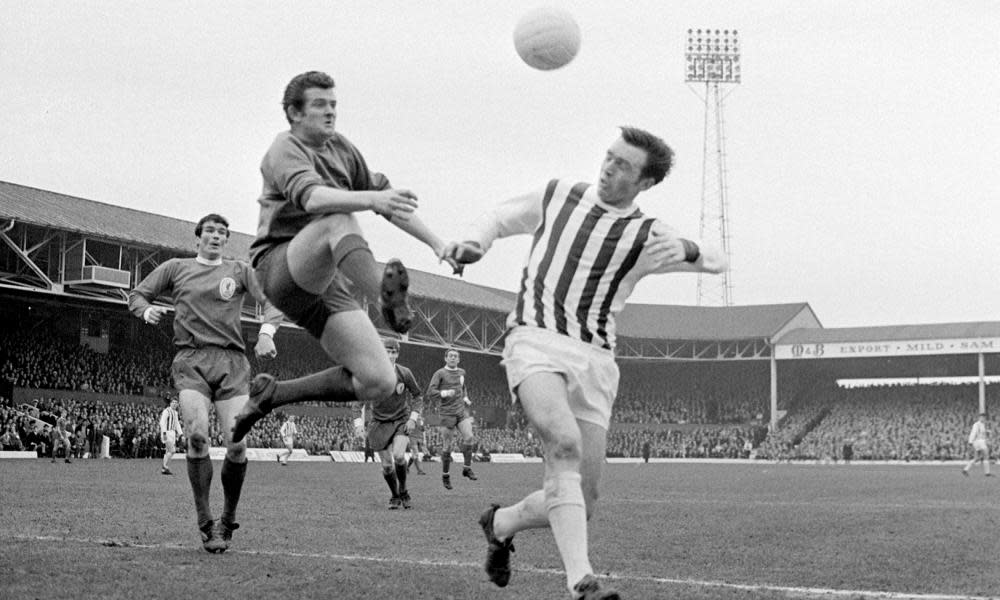Can heading a football lead to dementia? The evidence is growing

The death in 2002 of the former England and West Bromwich Albion striker Jeff Astle from degenerative brain disease placed the spotlight firmly on the possibility of a link between heading footballs and the risk of dementia. The coroner at the inquest ruled that Astle, 59, died from an “industrial disease” brought on by the repeated trauma of headers, and a later examination of Astle’s brain appeared to bear out this conclusion.
At that time there was sparse scientific data on the issue, but since then the balance of evidence has steadily tipped further in favour of a link. It has been shown that even single episodes of concussion can have lifelong consequences.
Related: Children in Scotland could be banned from heading footballs over dementia link
A 2016 study based on health records of more than 100,000 people in Sweden found that after a single diagnosed concussion people were more likely to have mental health problems and less likely to graduate from high school and college. Other research has shown that people in prison or homeless are more likely to have had a past experience of concussion.
In 2017, researchers from University College London examined postmortem the brains of six former footballers who had developed dementia. They found signs of brain injury called chronic traumatic encephalopathy (CTE) in four cases.
Last year a study by a team at Glasgow University found that former professional footballers were three and a half times more likely to die from dementia and other serious neurological diseases. The study was the largest ever, based on the health records of 7,676 ex-players and 23,000 members of the public, and was possibly the trigger for the Scottish FA’s plan to follow US soccer in banning heading the ball for young players.
There is an open question about which element of football is responsible for the link. Clashes of heads leading to concussion or other factors cannot be ruled out. But according to Prof Michael Grey, who is leading a project on football and dementia at the University of East Anglia, heading the ball is the most obvious culprit.
“The bigger issue really is probably these subconcussive injuries,” he said. “Repetitively heading the ball day after day, week after week, that’s what leads to the damage we see in ex-professionals.”
Grey said that since children have relatively larger heads and weaker necks, they are particularly at risk. “Just based on the pure mechanics, they’re going to have more damage,” he said.
Assuming that heading the ball is the culprit, another question is how exactly these repeated impacts make the brain more vulnerable. “There are lots of plausible explanations,” said Craig Richie, a professor of the psychiatry of ageing at the University of Edinburgh. “Is it a buildup of proteins like tau in the brain, or amyloid? It could be inflammation, it could be blood flow, it could be a whole host of different things.”
Richie is collaborating with the Glasgow study team on a project aimed at gathering data to fill in this gap. They are hoping to track 100 ex-professional footballers and 100 ex-rugby players, as well as hundreds of members of the public, over the coming decades. Participants will be given detailed brain scans, submit samples of cerebral spinal fluid and take part in cognitive tests.
Richie welcomed the Scottish FA’s move, saying that as well as being grounded in new scientific evidence it may reflect a society that cares more about brain health than was the case 20 years ago. “It’s higher in people’s minds that there is this risk,” he said.

 Yahoo News
Yahoo News 
